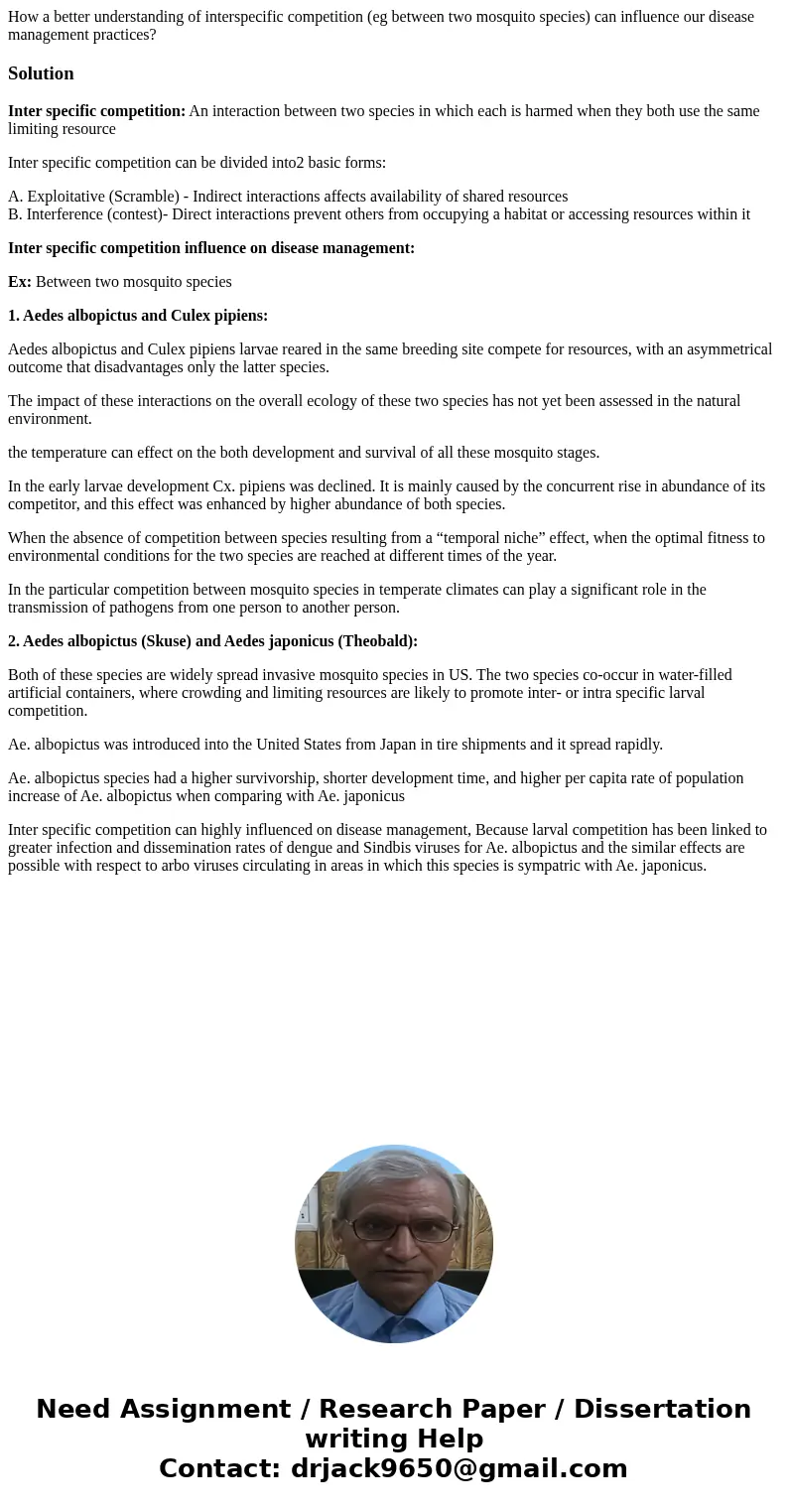How a better understanding of interspecific competition eg b
How a better understanding of interspecific competition (eg between two mosquito species) can influence our disease management practices?
Solution
Inter specific competition: An interaction between two species in which each is harmed when they both use the same limiting resource
Inter specific competition can be divided into2 basic forms:
A. Exploitative (Scramble) - Indirect interactions affects availability of shared resources
B. Interference (contest)- Direct interactions prevent others from occupying a habitat or accessing resources within it
Inter specific competition influence on disease management:
Ex: Between two mosquito species
1. Aedes albopictus and Culex pipiens:
Aedes albopictus and Culex pipiens larvae reared in the same breeding site compete for resources, with an asymmetrical outcome that disadvantages only the latter species.
The impact of these interactions on the overall ecology of these two species has not yet been assessed in the natural environment.
the temperature can effect on the both development and survival of all these mosquito stages.
In the early larvae development Cx. pipiens was declined. It is mainly caused by the concurrent rise in abundance of its competitor, and this effect was enhanced by higher abundance of both species.
When the absence of competition between species resulting from a “temporal niche” effect, when the optimal fitness to environmental conditions for the two species are reached at different times of the year.
In the particular competition between mosquito species in temperate climates can play a significant role in the transmission of pathogens from one person to another person.
2. Aedes albopictus (Skuse) and Aedes japonicus (Theobald):
Both of these species are widely spread invasive mosquito species in US. The two species co-occur in water-filled artificial containers, where crowding and limiting resources are likely to promote inter- or intra specific larval competition.
Ae. albopictus was introduced into the United States from Japan in tire shipments and it spread rapidly.
Ae. albopictus species had a higher survivorship, shorter development time, and higher per capita rate of population increase of Ae. albopictus when comparing with Ae. japonicus
Inter specific competition can highly influenced on disease management, Because larval competition has been linked to greater infection and dissemination rates of dengue and Sindbis viruses for Ae. albopictus and the similar effects are possible with respect to arbo viruses circulating in areas in which this species is sympatric with Ae. japonicus.

 Homework Sourse
Homework Sourse